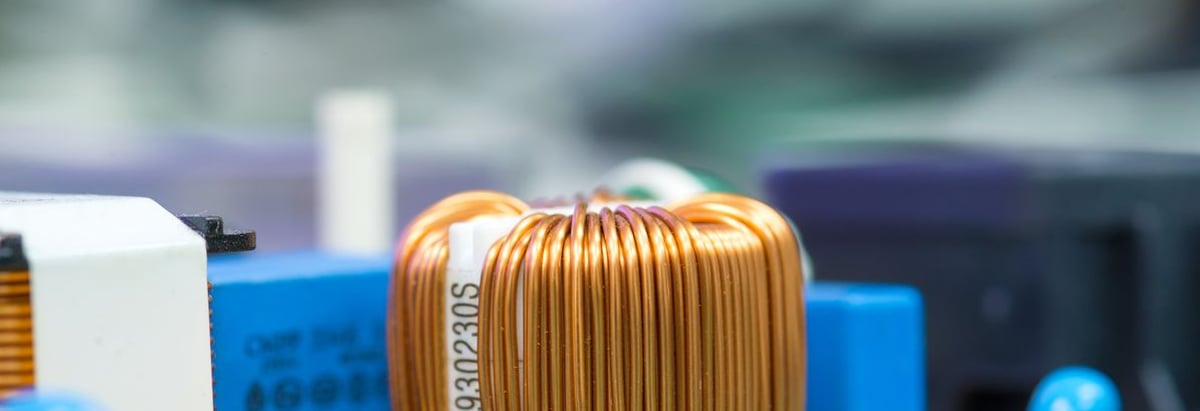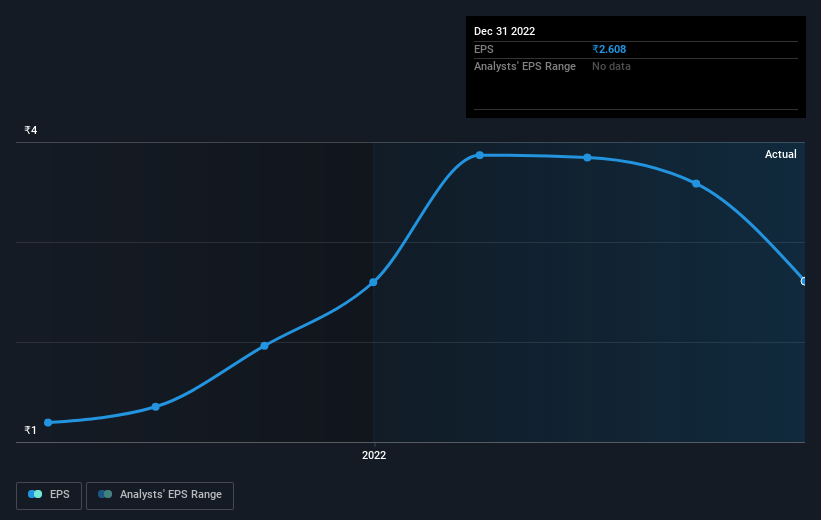- India
- /
- Metals and Mining
- /
- NSEI:HINDCOPPER
While shareholders of Hindustan Copper (NSE:HINDCOPPER) are in the black over 3 years, those who bought a week ago aren't so fortunate

Hindustan Copper Limited (NSE:HINDCOPPER) shareholders might be concerned after seeing the share price drop 12% in the last quarter. But that doesn't displace its brilliant performance over three years. Over that time, we've been excited to watch the share price climb an impressive 359%. So the recent fall doesn't do much to dampen our respect for the business. The thing to consider is whether there is still too much elation around the company's prospects.
In light of the stock dropping 4.3% in the past week, we want to investigate the longer term story, and see if fundamentals have been the driver of the company's positive three-year return.
See our latest analysis for Hindustan Copper
To quote Buffett, 'Ships will sail around the world but the Flat Earth Society will flourish. There will continue to be wide discrepancies between price and value in the marketplace...' One imperfect but simple way to consider how the market perception of a company has shifted is to compare the change in the earnings per share (EPS) with the share price movement.
During three years of share price growth, Hindustan Copper moved from a loss to profitability. Given the importance of this milestone, it's not overly surprising that the share price has increased strongly.
The graphic below depicts how EPS has changed over time (unveil the exact values by clicking on the image).

It's probably worth noting that the CEO is paid less than the median at similar sized companies. But while CEO remuneration is always worth checking, the really important question is whether the company can grow earnings going forward. Before buying or selling a stock, we always recommend a close examination of historic growth trends, available here..
What About Dividends?
When looking at investment returns, it is important to consider the difference between total shareholder return (TSR) and share price return. The TSR incorporates the value of any spin-offs or discounted capital raisings, along with any dividends, based on the assumption that the dividends are reinvested. It's fair to say that the TSR gives a more complete picture for stocks that pay a dividend. As it happens, Hindustan Copper's TSR for the last 3 years was 365%, which exceeds the share price return mentioned earlier. The dividends paid by the company have thusly boosted the total shareholder return.
A Different Perspective
We regret to report that Hindustan Copper shareholders are down 16% for the year (even including dividends). Unfortunately, that's worse than the broader market decline of 2.6%. However, it could simply be that the share price has been impacted by broader market jitters. It might be worth keeping an eye on the fundamentals, in case there's a good opportunity. Longer term investors wouldn't be so upset, since they would have made 9%, each year, over five years. It could be that the recent sell-off is an opportunity, so it may be worth checking the fundamental data for signs of a long term growth trend. It's always interesting to track share price performance over the longer term. But to understand Hindustan Copper better, we need to consider many other factors. For instance, we've identified 1 warning sign for Hindustan Copper that you should be aware of.
We will like Hindustan Copper better if we see some big insider buys. While we wait, check out this free list of growing companies with considerable, recent, insider buying.
Please note, the market returns quoted in this article reflect the market weighted average returns of stocks that currently trade on Indian exchanges.
Valuation is complex, but we're here to simplify it.
Discover if Hindustan Copper might be undervalued or overvalued with our detailed analysis, featuring fair value estimates, potential risks, dividends, insider trades, and its financial condition.
Access Free AnalysisHave feedback on this article? Concerned about the content? Get in touch with us directly. Alternatively, email editorial-team (at) simplywallst.com.
This article by Simply Wall St is general in nature. We provide commentary based on historical data and analyst forecasts only using an unbiased methodology and our articles are not intended to be financial advice. It does not constitute a recommendation to buy or sell any stock, and does not take account of your objectives, or your financial situation. We aim to bring you long-term focused analysis driven by fundamental data. Note that our analysis may not factor in the latest price-sensitive company announcements or qualitative material. Simply Wall St has no position in any stocks mentioned.
About NSEI:HINDCOPPER
Hindustan Copper
Engages in the exploration, exploitation, and mining of copper and copper ores in India.
Excellent balance sheet with proven track record.
Similar Companies
Market Insights
Community Narratives



